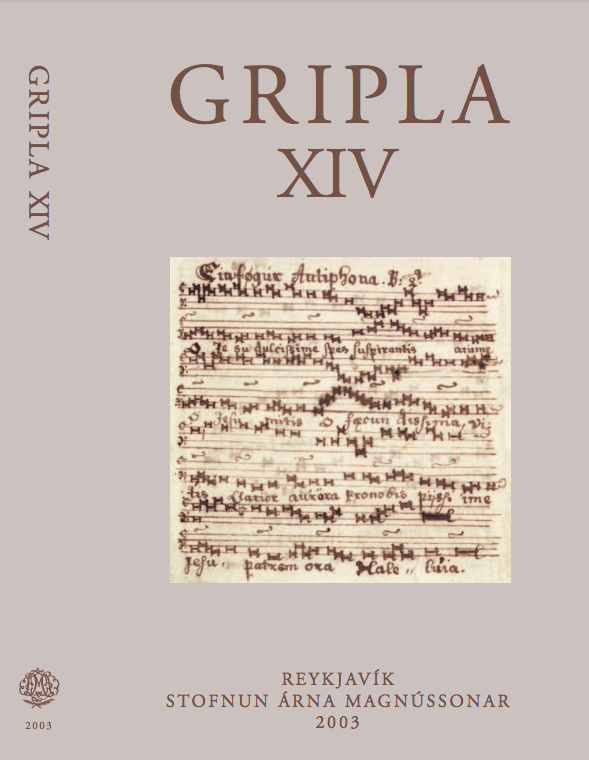Ýseturs Eld Hati
Vísa í Fríssbók
Útdráttur
Codex Frisianus, AM 45 fol, a vellum manuscript from the beginning of the fourteenth century, is one of the principal manuscripts for the first and third parts of Heimskringla; it is of special importance for the additional material it contains, taken from other sources than the main text from which it was copied. In Ólafs saga Tryggvasonar in Codex Frisianus, one bit of additional material is a scaldic stanza, obviously taken from a poem about King Óláfur Tryggvason, probably a drápa, and attributed to Hallar-Steinn. Finnur Jónsson printed this stanza at the bottom of the page in his edition of Heimskringla (HkrFJ 1:292) with this note: 'Verset er af Hallfr0öi\' He printed the stanza later in Skjd. A 1:156 and B 1:148, as the first stanza of what remains of the Óláfsdrápa of Hallfreðr vandræðaskáld, noting (in A I) that the first three lines were nearly identical with the last three lines in the first stanza of Arnórr jarlaskáld's Magnúsdrápa and were probably taken from that poem, but that Hallfreðr's original text had been lost. Diana Whaley is of the same opinion — see pp. 183-84 of her book on Arnórr jarlaskáld. This article considers whether the stanza was correctly attributed in Codex Frisianus and whether it then might be from Rekstefja, Hailar-Steinn's drápa about Oláfur Tryggvason; in this case the stanza would fit in well as the third stanza of the poem. But if Finnur Jónsson's surmise is correct — that the stanza is by Hallfreðr — it is probable that it came from near the beginning of his Óláfsdrápa. Six stanzas from that poem are preserved in their entirety in Fagrskinna and copied from there in the other principal manuscript of Ólafs saga Tryggvasonar of Oddr Snorrason, AM 310 4to; five and a half stanzas are in Heimskringla, distributed wholly or partially throughout the text at appropriate places in the narrative. This article compares the subject matter of the stanza with written sources about Óláfur Tryggvason and finds no evidence that the composer of the stanza followed written sources, or that the authors of the written sources made direct use of the stanza. As to whether it is probable that the first three lines of the stanza go back to Arnórr jarlaskáld's Magnúsdrápa, examples are gathered here showing that Arnórr was not shy about borrowing from the poems of others. In this light he is more likely to have been the receiver than the donor. Finally, the article compares the meters employed in the Rekstefja of Hallar-Steinn, the stanza in Codex Frisianus and what is preserved of Hallfreðr's Óláfsdrápa.
What follows from these considerations is that the stanza in Codex Frisianus cannot derive from any other preserved poem than the Ólqfsdrápa, of which six stanzas are to be found in Fagrskinna and in AM 310 4to, and five and a half stanzas scattered here and there in Heimskringla, attributed to Hallfreðr vandræðaskáld in all these places. The meter and style of the stanza are akin to these six stanzas, as well as what is preserved of Hallfreðr's memorial drápa for Óláfur Tryggvason, whereas Rekstefja has quite a different meter. Finnur Jónsson saw this and presumably thought it too obvious to mention. But I am probably not the only one to think that his assertion needed firm backing.



